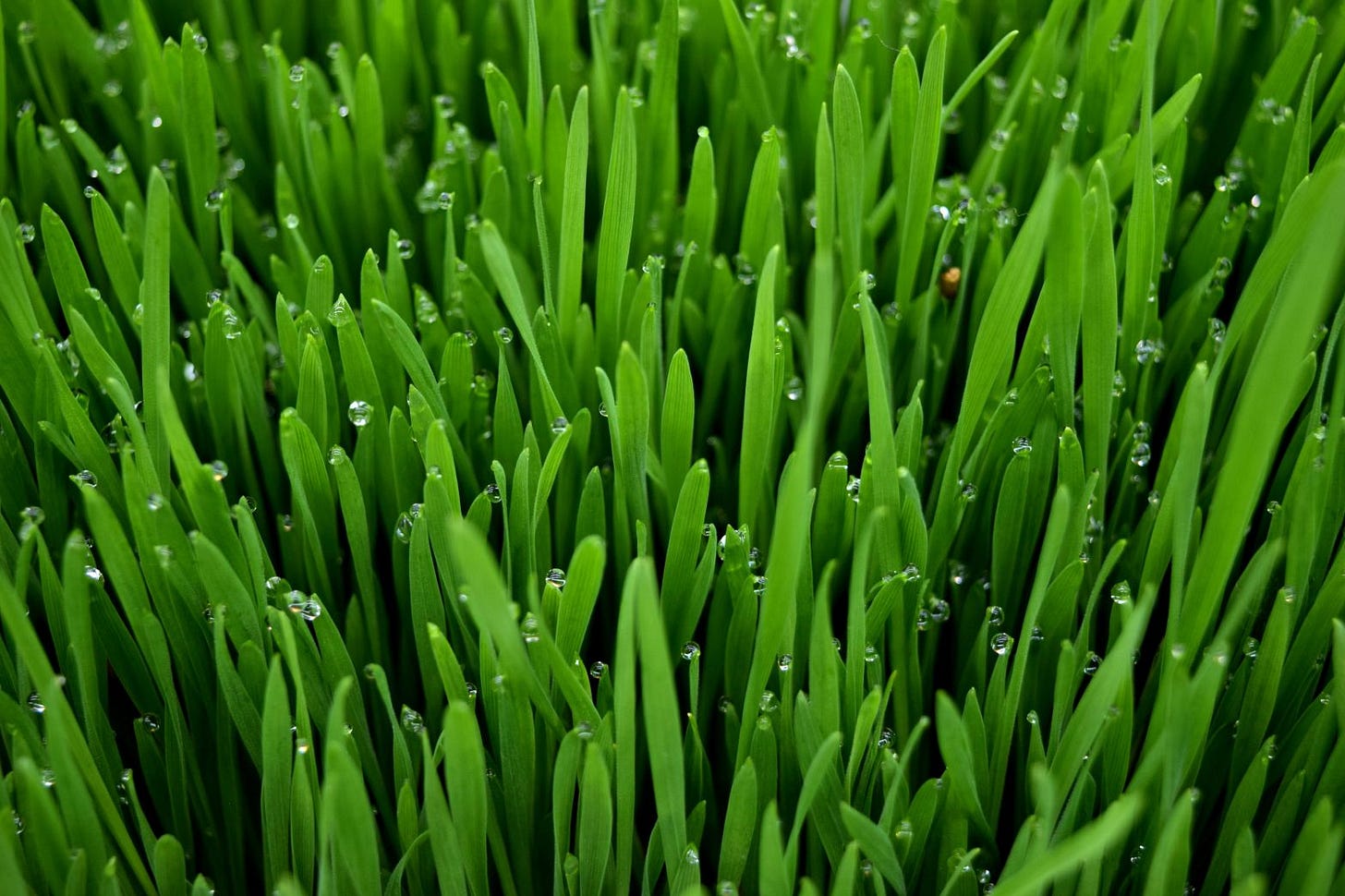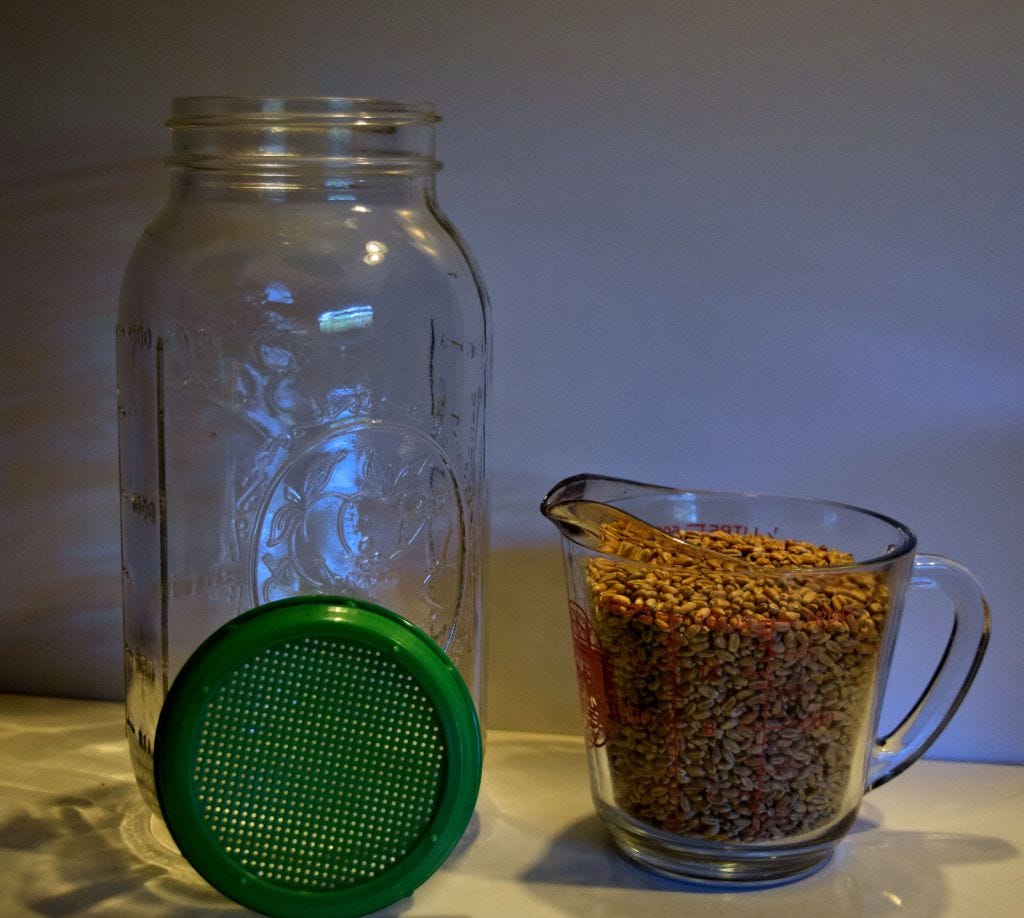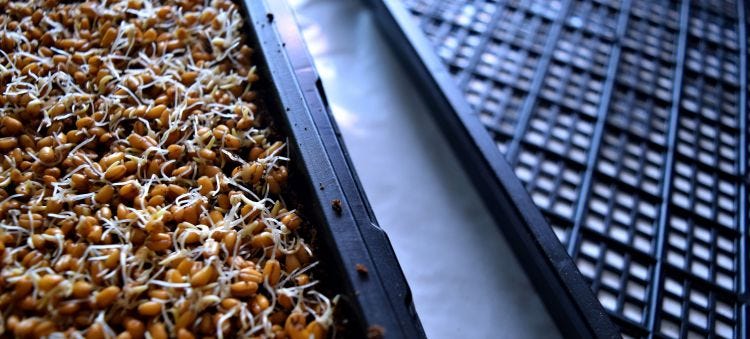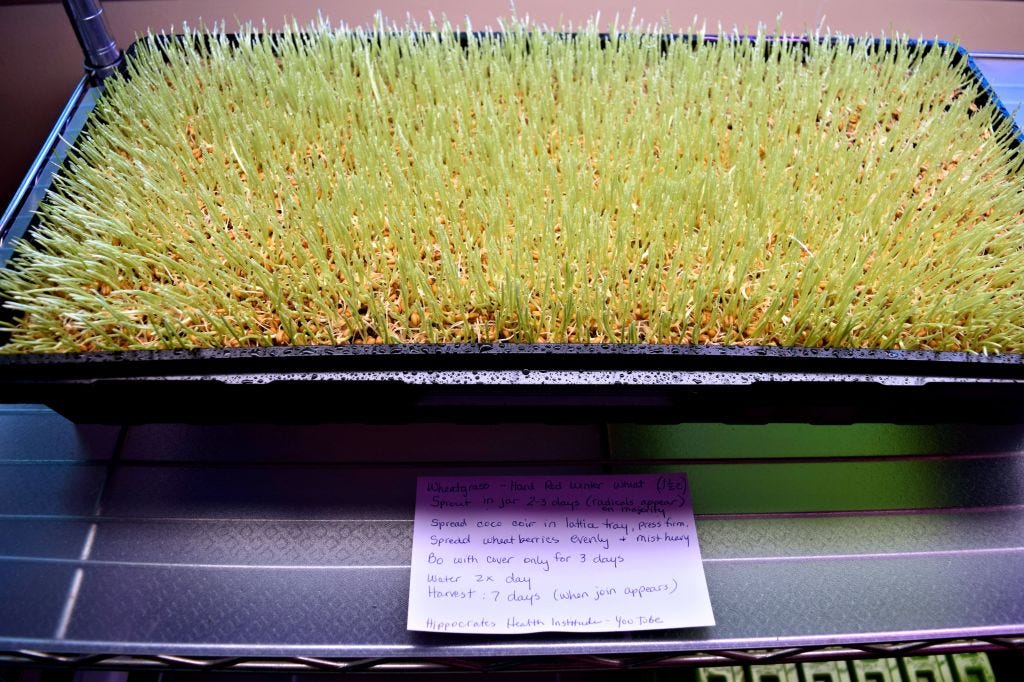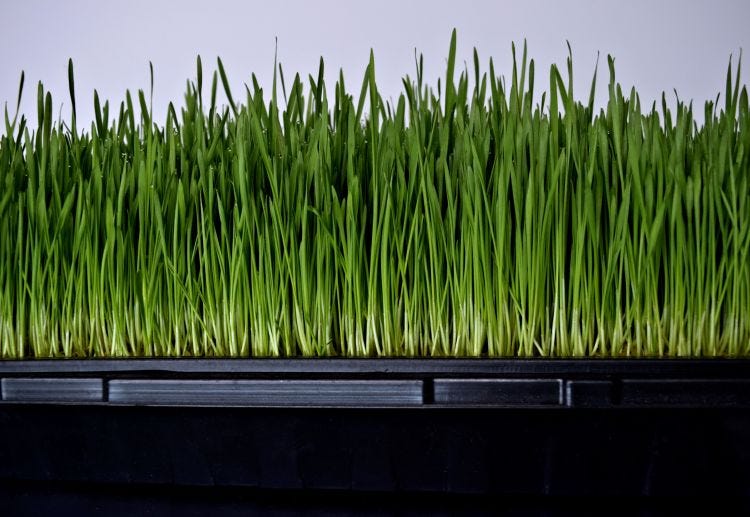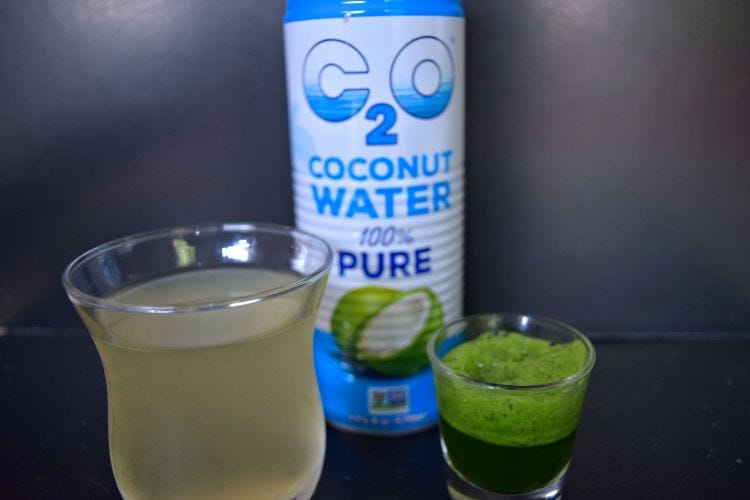What is Wheatgrass?
Wheatgrass is grown in trays under light from wheat seeds known as “wheatberries”. As a microgreen, wheatgrass is usually harvested in 8-10 days. The wheatberries are soaked overnight, sprouted for the first one to two days and then planted. It can be grown with soil, coco coir or hydroponically indoors on a sunny windowsill or under a light in a kitchen or on a rack in a grow system. It’s easy to grow and can be enjoyed an just over a week.
Wheatgrass Juice
Wheatgrass juice, freshly squeezed is a great detoxifying drink. The juice is high in chlorophyll and tastes like fresh cut grass. Some people don’t like the taste, and to be honest it’s not a “sipping” kind of beverage. Usually wheatgrass is served in 1 to 4 ounce shots and “tossed down” like a shot of bourbon. It is wise to start with only 1/2 ounce of wheatgrass juice and only if your detox pathways are operating efficiently.
Wheatgrass juice is not recommended for anyone who has issues with detoxification pathways. Always check with your medical professional before doing a wheatgrass cleanse.
Because wheatgrass is a great detoxifier make sure to drink plenty of water throughout the day when juicing wheatgrass. The water will help flush toxins out of your system. Wheatgrass is very alkaline and I drink it to help with gastrointestinal imbalances like IBS and I’ve heard it helps with ulcerative colitis too.
Nutritional Info
Wheatgrass contains beta carotene, Vitamins C, E, and K, along with iron, calcium, magnesium, amino acids, and B vitamins. The juice is comprised of 20% protein and is good for people who are nutritionally depleted or with a compromised immune system.
Health Properties of Chlorophyll
Cleanse the blood
Purify the liver
Enhance oxygen transport
Boost the immune system
Increase red blood cell production
Remove heavy metals, pesticides, plastics and ingested pollutants
Growing Wheatgrass
Start out by soaking and sprouting the wheatberries in a two quart mason jar with a plastic screen lid or cheesecloth. Measure two cups of hard red winter wheat. Place berries in jar screw on screen cover and rinse and drain. Cover the wheatberries with four to six cups of warm water (pH approximately 6.0). Let soak overnight (12 hours).
Rinse and drain berries two times a day until radicles (roots) begin to appear. Keep in dark while sprouting. Prop jar on edge of a plate to allow for drainage. I use a big jar to provide more air to discourage mold growth.
Spread seeds evenly over growth medium in tray. I use coco coir in a lattice tray with a solid bottom tray to allow bottom watering. Place another solid tray on top and apply weight for 3 days. Mist seeds twice per day.
On the fourth day remove weights and the top tray and place the tray of wheatgrass in the light. Begin watering from the bottom with nutrients added to water. Start with 1/2 cup and increase to 1 cup as roots grow.
This wheatgrass is almost ready to harvest. See the lighter area at the bottom of the grass and a greener top? This is what is known as the joins of wheatgrass. When the lighter area is about 1-2″ tall the wheatgrass is ready to harvest. This is typically between Day 8-10 for harvest.
Recipes
Orange Wheatgrass Smoothie Recipe (from Dr. Axe)
Wheatgrass Shot and Coconut Water Chaser – 1 oz. wheatgrass shot/4 oz. coconut water




